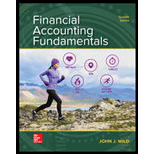
Investment:
It is a financial term which refers to spend or deposit money to get the financial benefits.
The different ways in which a firm can invest are mentioned below:
- Long-term investments
- Short-term investments
Short-term investments:
It includes such investments which are highly liquid in nature as these can be convert in form of cash easily during the period of 1 year.
It means record of financial data related to business transactions in a journal in a manner so that debit equals credit. It provides an audit trail to the auditor and a means to analyze the effects of transactions to an organization’s financial health.
Rules of Journal Entry:
The rules for journal entry are defined by 5 accounting components,
- Assets: Increase in asset should be debit and decrease should be credit.
- Liabilities: Increase in liabilities should be credit and decrease should be debit.
- Equity: Increase in Equity should be credit and decrease should be debit.
- Expense: Increase in expense should be debit and decrease should be credit.
- Revenue: Increase in revenue should be credit and decrease should be debit.
a.
To prepare: Journal entry for short-term investment.
b.
To prepare: Journal entry to record dividend on shares.
c.
To prepare: Journal entry to record sale of 500 shares.
Want to see the full answer?
Check out a sample textbook solution
Chapter C Solutions
FINANCIAL ACCT.FUND.(LOOSELEAF)
- I am searching for the accurate solution to this financial accounting problem with the right approach.arrow_forwardSolve this questionsarrow_forwardOptical Company estimates its manufacturing overhead to be $540,000 and its direct labor costs to be $450,000 for year 2. Optical worked three jobs for the year. Job 2-1, which was sold during year 2, had actual direct labor costs of $150,000. Job 2-2, which was completed, but not sold at the end of the year, had actual direct labor costs of $275,000. Job 2-3, which is still in work-in-process inventory, had actual direct labor costs of $100,000. The actual manufacturing overhead for year 2 was $600,000. Manufacturing overhead is applied on the basis of direct labor costs. a) How much overhead was applied to each job in year 2? b) What was the over-or underapplied manufacturing overhead for year 2?arrow_forward
 Cornerstones of Financial AccountingAccountingISBN:9781337690881Author:Jay Rich, Jeff JonesPublisher:Cengage Learning
Cornerstones of Financial AccountingAccountingISBN:9781337690881Author:Jay Rich, Jeff JonesPublisher:Cengage Learning Intermediate Accounting: Reporting And AnalysisAccountingISBN:9781337788281Author:James M. Wahlen, Jefferson P. Jones, Donald PagachPublisher:Cengage Learning
Intermediate Accounting: Reporting And AnalysisAccountingISBN:9781337788281Author:James M. Wahlen, Jefferson P. Jones, Donald PagachPublisher:Cengage Learning Financial AccountingAccountingISBN:9781305088436Author:Carl Warren, Jim Reeve, Jonathan DuchacPublisher:Cengage Learning
Financial AccountingAccountingISBN:9781305088436Author:Carl Warren, Jim Reeve, Jonathan DuchacPublisher:Cengage Learning Financial Accounting: The Impact on Decision Make...AccountingISBN:9781305654174Author:Gary A. Porter, Curtis L. NortonPublisher:Cengage Learning
Financial Accounting: The Impact on Decision Make...AccountingISBN:9781305654174Author:Gary A. Porter, Curtis L. NortonPublisher:Cengage Learning College Accounting, Chapters 1-27AccountingISBN:9781337794756Author:HEINTZ, James A.Publisher:Cengage Learning,
College Accounting, Chapters 1-27AccountingISBN:9781337794756Author:HEINTZ, James A.Publisher:Cengage Learning,





